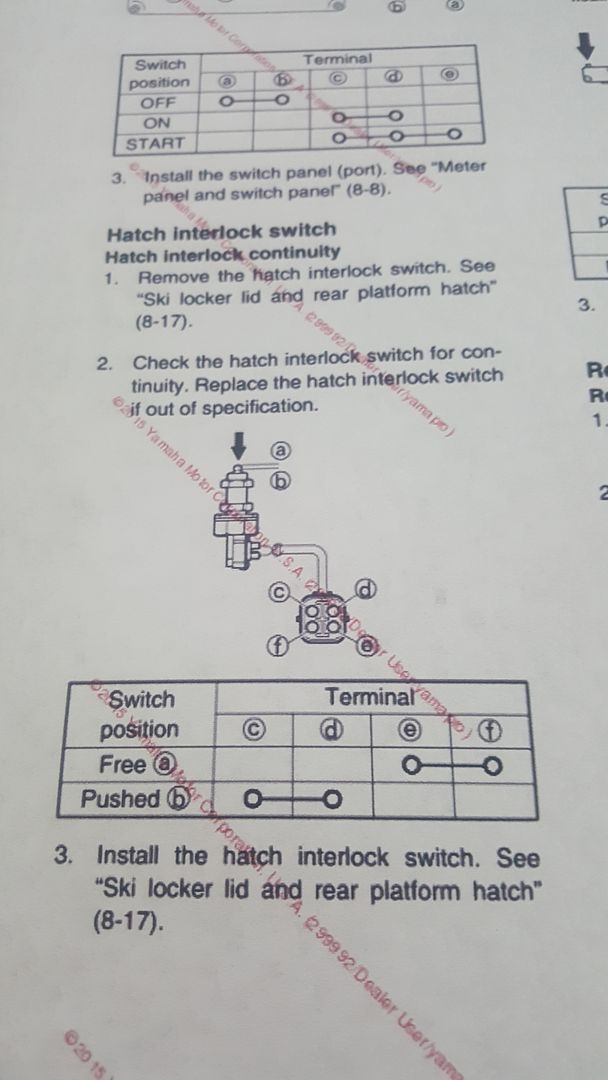danclemo
Jet Boat Lover
- Messages
- 99
- Reaction score
- 81
- Points
- 77
- Boat Make
- Yamaha
- Year
- 2017
- Boat Model
- AR
- Boat Length
- 19
With all the Clean-out hatch switch issues I see on here I can't seem to find a thread about jumpering around this stupid thing? I had my out today and there are two wires in (both brown) and two going out (White/Black). Does anyone know the circuit for this, I would like to just hard wire around this and remove this switch. I was hoping it was just one and one out and it would have been no-brainer.
And no, this is not a debate on rather I should jumper this or not....I realize it's a safety issue and I shouldn't, but I'm going too...LOL
Any help appreciated. Thanks.
And no, this is not a debate on rather I should jumper this or not....I realize it's a safety issue and I shouldn't, but I'm going too...LOL
Any help appreciated. Thanks.

